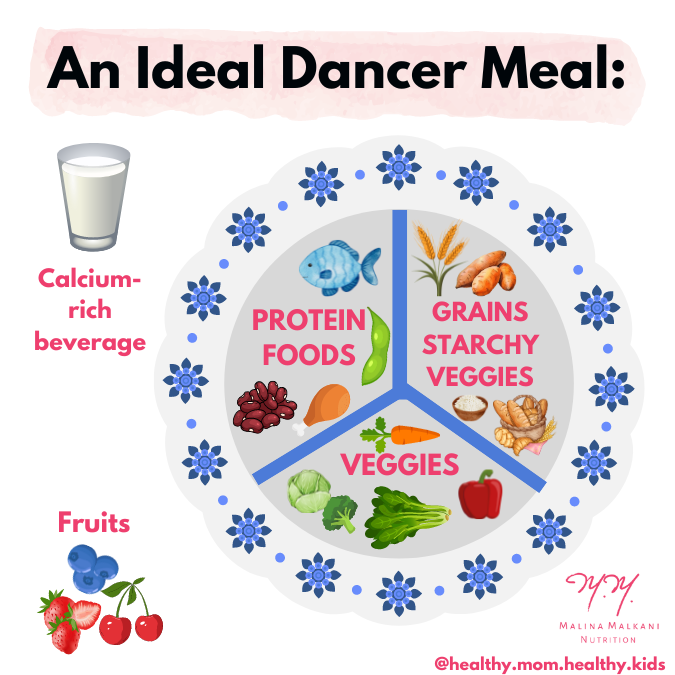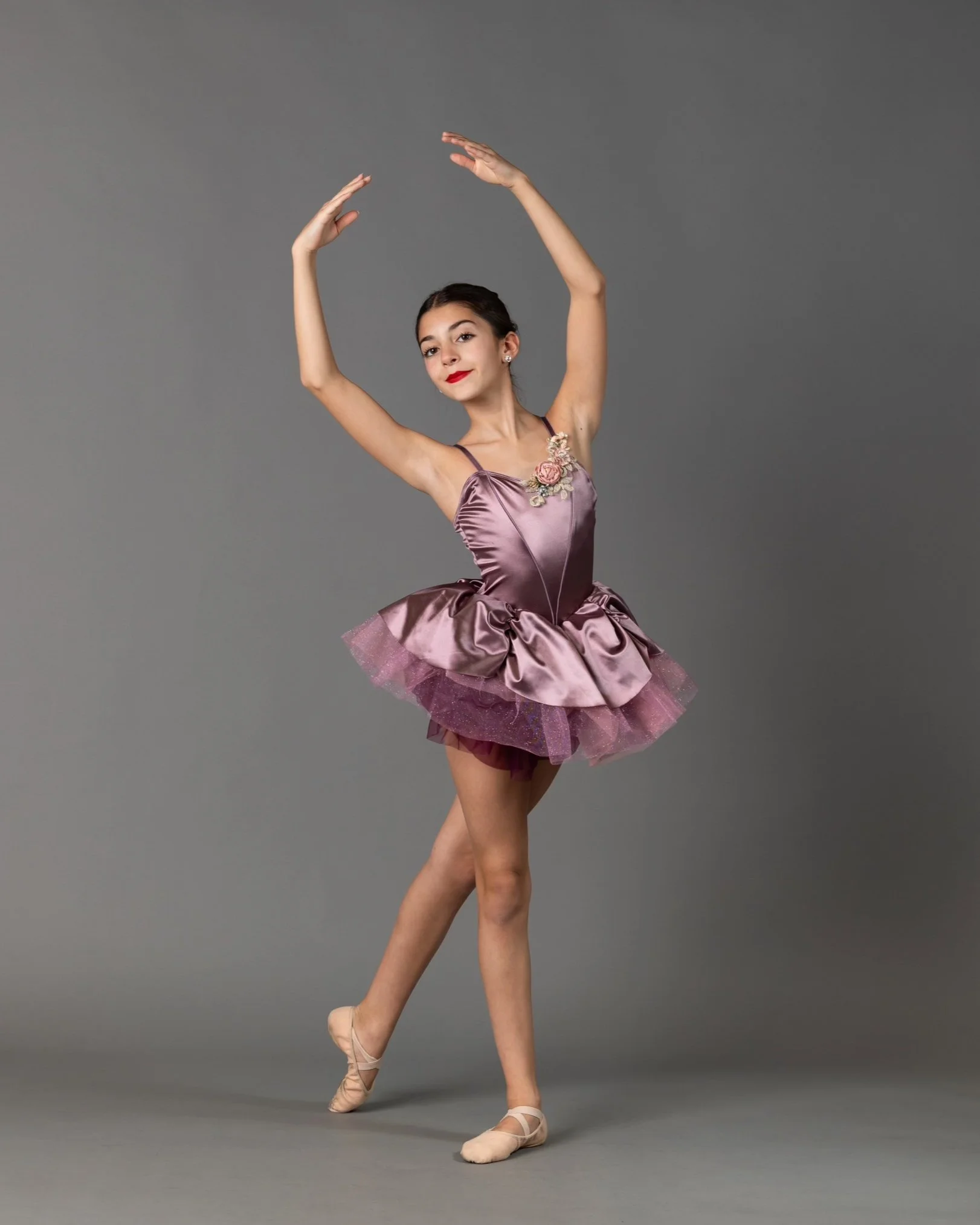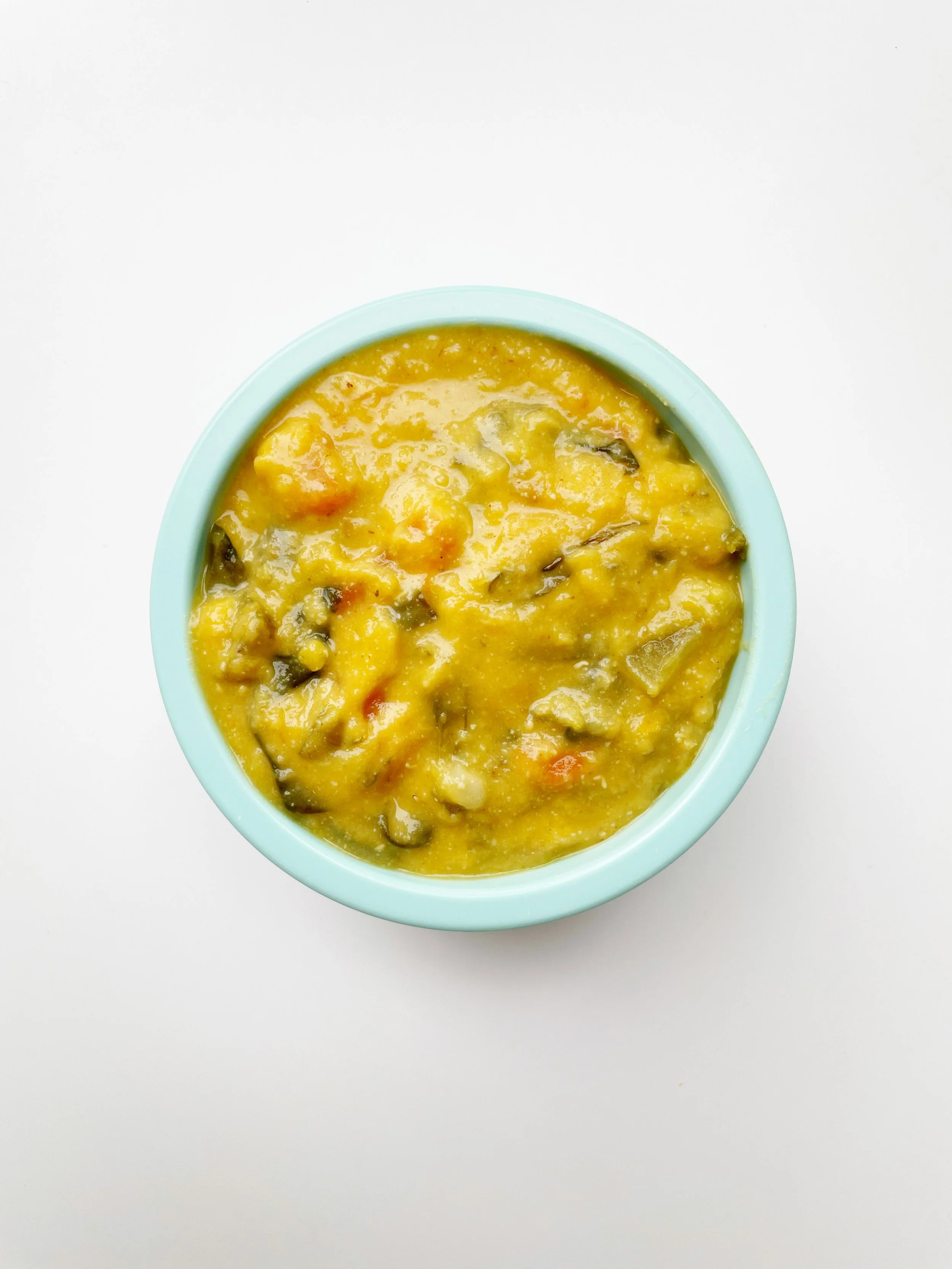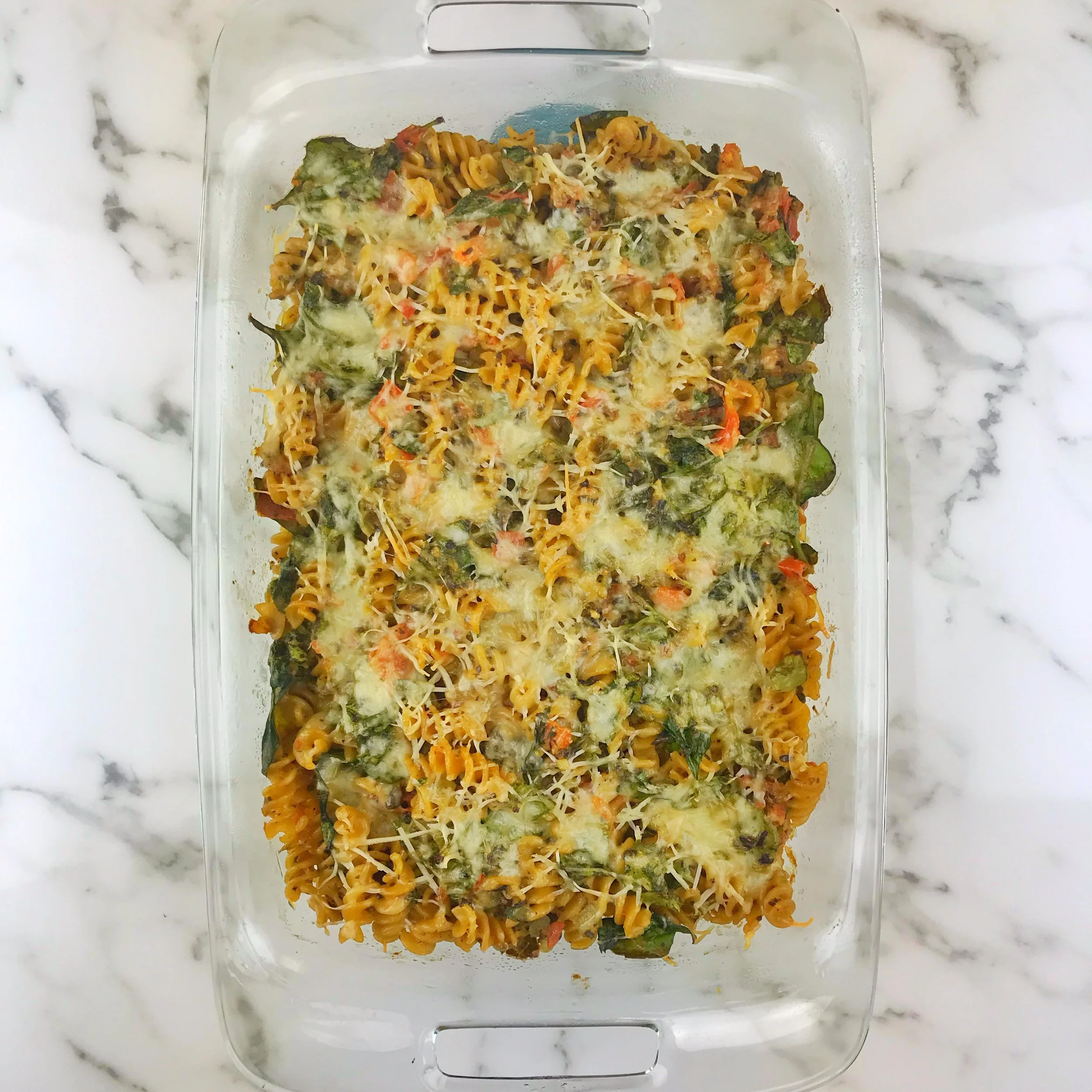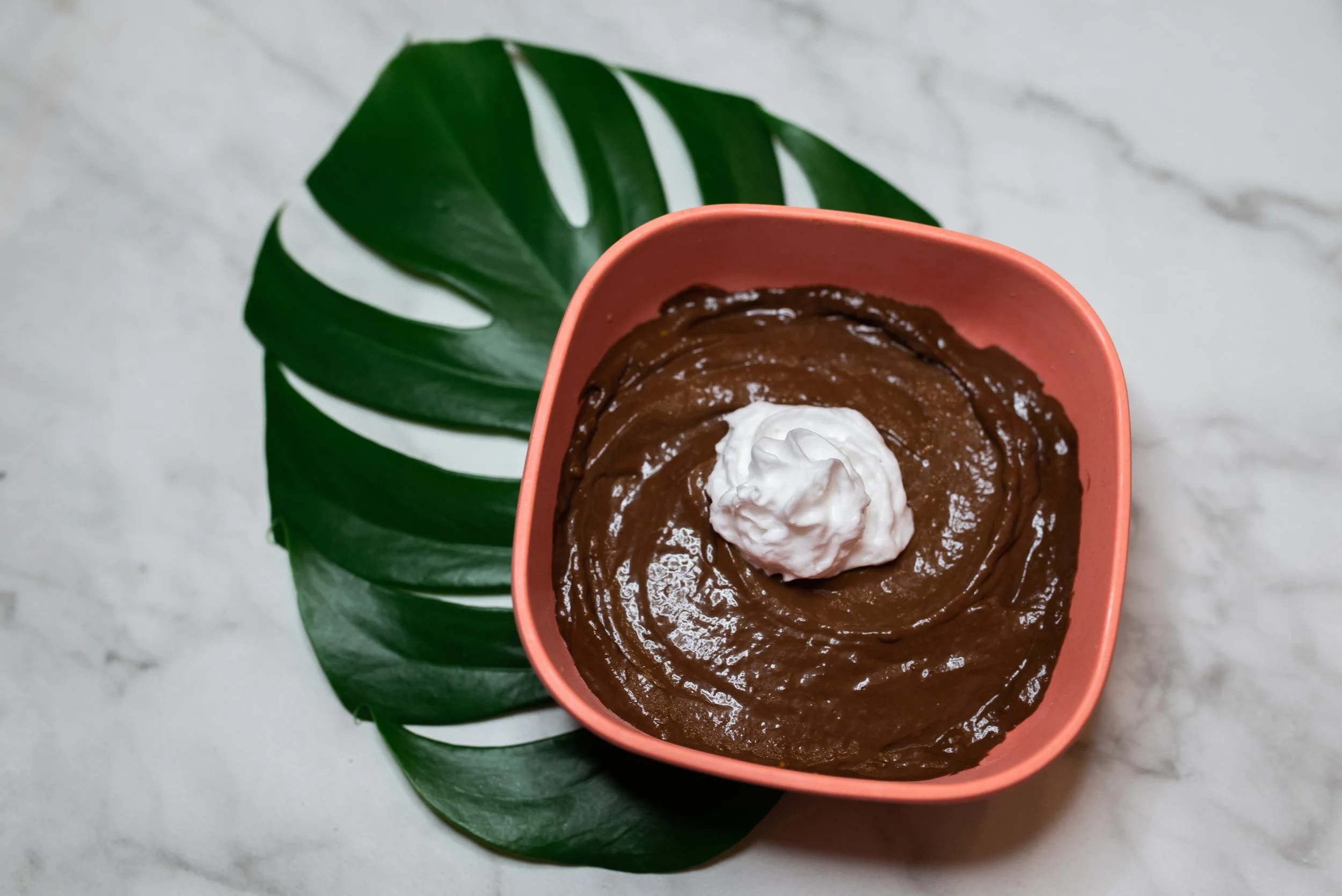Nutrition for Dancers: Fueling Your Young Performer
Image by Lo Austin Photo
Dance is more than just a physical activity; it's an art form that requires whole-body health, including mental well-being. As a dancer, your body is your instrument. To perform at your best, you need to fuel it with the right nutrition. This is especially important for young dancers whose bodies are still developing.
I know this deep in my bones as a former professional performer myself, but even more so these days, as a pediatric dietitian and the mother of a young, competitive dancer (pictured here).
I wanted to write this post to organize my thoughts and guidance on this topic for her and for the parents of all young performers who are striving to be the best they can be.
Many dancers may struggle with a desire or pressure to maintain a slim figure or have performance anxiety, leading to decreased food intake. This can lead to an increased risk of injury, weak bones, low energy levels, and possible irregular menstrual cycles in females—so we need to reinforce messages about body diversity, keep an eye out for decreased food intake, and address it right away, if and when there are any signs of it.
In the following article, we'll explore the importance of healthy nutrition and hydration for dancers, what foods to eat and avoid, and how nutrition can help prevent injuries. We’ll also discuss whether or not supplements are necessary, if a vegan diet can generally provide enough nutrients for young dancers, and how to maintain a healthy relationship with food while pursuing dance as an activity or as a part of a budding career in dance.
Why is Healthy Nutrition Important for Dancers?
Dancers require a high level of energy and stamina to perform at their peak. A well-balanced diet provides the necessary nutrients for muscle strength, endurance, and recovery. Good nutrition and bone health go hand in hand, and proper nutrition also supports overall health, which is essential for preventing injuries and maintaining a strong immune system.
Mental health is also an integral part of a dancer's well-being. Proper nutrition can support mental clarity, focus, and mood stability, all of which are essential for a dancer's performance. For example, foods rich in omega-3 fatty acids, such as salmon and walnuts, have been linked to improved mood and cognitive function.
What Foods Should Dancers Eat?
An ideal balanced dancer's diet consists of a nutrient-dense blend of carbohydrates, proteins, fats, vitamins, and minerals.
As with any young athlete, dancers should aim for three meals and 1-2 snacks daily. It’s best to eat a meal about 2-3 hours before class, rehearsal, or a performance, and then a carbohydrate-rich snack 30-60 minutes before activity as well. Some of my favorite pre-workout snacks include energy-rich No-Bake Chocolate Chip Oat Cookies, Toasty Chick Peas, or a Chocolate Cherry Smoothie.
The right balance of macronutrients, micronutrients, and fluids throughout the day is the best way to provide energy for growth and activity. Dancers should focus on consuming a variety of nutrient-dense foods from all the food groups, including:
Complex Carbohydrates: Whole grains, fruits, and vegetables provide sustained energy for long rehearsals and performances
Lean Proteins: Chicken, fish, tofu, beans, and legumes are excellent protein sources for muscle repair and growth
Healthy Fats: Nuts, seeds, avocados, and olive oil can support joint health, maintain hormone balance, and provide energy
Calcium-Rich Foods: Dairy products, leafy greens, and fortified plant-based milk help grow and maintain strong bones
What Foods Should Dancers Avoid?
While moderate amounts are fine, some dancers may find that excessive amounts of ultraprocessed foods and sugary snacks that are higher in saturated fat and added sugar can lead to upset stomach, sluggishness, and uneven energy levels. It's also important to moderate caffeine intake as it can affect hydration and energy levels. In fact, the American Academy of Pediatrics advises against the consumption of caffeinated drinks by children and adolescents.
That said, as a pediatric registered dietitian and mother of three girls, I believe strongly that ALL foods can fit into a well-balanced diet. It is important for dancers to avoid restrictive diets and strict “food rules” as these can quickly lead to eating disorders and disordered eating patterns.
Even some diets that are touted as “healthy,” or “clean eating” (which means nothing) can lead to over-restriction and fuel food obsession and orthorexia, or an obsession with only eating foods the person considers “healthy.”
If you see signs of any sort of disordered eating in your child, do not wait to reach out to your pediatrician for help finding a referral for a team of healthcare practitioners who specialize in eating disorders and disordered eating. In general, the earlier the intervention, the more successful the outcomes.
For growing children and teens, regular meals and snacks, variety, and balance are key—and consuming enough calories to fuel growth and activity is essential.
How Much Water Should Dancers Drink?
Hydration is crucial for dancers, as they lose fluids through sweat during rehearsals and performances. The amount of water a dancer should drink to stay hydrated can vary based on factors such as age, gender, weight, activity level, and the climate in which they are dancing.
As a general guideline, young dancers should aim to drink:
At least 8-10 glasses of water daily
More if they are sweating heavily
More if dancing in hot or humid conditions
More if engaging in particularly intense or prolonged dance rehearsals, classes, or performances
At least 2-3 cups of water leading up to a rehearsal or performance
At least 1 cup every 15-20 minutes or so during activity
In addition to water, dancers can also consume hydrating foods, like watermelon and cucumbers, and electrolyte-rich drinks to help maintain proper hydration levels. Instead of sports beverages with too much caffeine like Celsius or Prime drinks, try making your own electrolyte drink with water, a pinch of salt, and a touch of natural sweeteners, like honey or 100% fruit juice.
Monitoring urine color can also be a useful indicator of hydration levels; pale yellow urine generally indicates adequate hydration, while dark yellow urine may indicate dehydration.
Can a Dancer Eat a Vegan Diet?
Yes! Dancers and other athletes can follow a plant-based diet and enjoy some of the many health benefits of eating more plant foods, as long as the diet is well-planned and includes adequate protein, iron, calcium, vitamin B12, and omega-3 fatty acids.
Plant-based protein sources such as legumes (beans, lentils, chickpeas), tofu, tempeh, quinoa, nuts, and seeds can provide all the essential amino acids needed for muscle repair and growth.
Plant-based sources of calcium include tofu, fortified plant milks, almonds, beans and legumes, and tahini.
One of the best sources of vitamin B12 for vegans is nutritional yeast. I love sprinkling these tasty, almost cheesy-flavored flecks on eggs in the morning or over a stir-fry for dinner. Vegetarians may have an easier time meeting their needs for vitamin B12 through eggs and dairy products.
The highest plant-based iron sources include fortified breakfast cereals and cannellini beans. Other good sources include lentils, tomatoes, spinach, tofu, beans, legumes, and cashews. In order to get enough iron on a vegetarian diet it is important to pair plant-based sources of iron with foods high in vitamin C in order to increase absorption.
Should a Young Dancer Take Dietary Supplements?
In general, probably not. While supplements can be beneficial in certain situations, they can’t replace a healthy and balanced diet. Dancers should prioritize meeting their nutritional needs through food choices whenever possible.
A few conditions that may require supplementation include specific nutrient deficiencies, such as low iron or vitamin D, recovering from an injury, difficulty maintaining certain nutrient needs while following a specific diet, or restrictive eating due to an issue like picky eating or food allergies that leads to the elimination of certain food groups or nutrient sources. (If your child is struggling with picky eating, I have a course for caregivers on navigating picky eating behaviors for you.)
It's particularly important for the parents of young dancers (and dancers themselves) to consult with a healthcare provider or a registered dietitian before taking any supplements. This ensures that they take the right supplements in the correct doses, because excessive (or inadequate) intake of certain nutrients can negatively affect health and performance.
Is Calorie Restriction Harmful?
Yes. Young athletes must meet their calorie needs in order to have enough energy for their activity. When teens begin to restrict calories for a particular sport that focuses on weight, like dance, their bodies can quickly go into a calorie deficit. This can cause growth issues, low energy and stamina, and a higher risk of injuries.
While many dancers are conscious of their weight, it is not helpful (and can be very dangerous) to solely count calories for weight management. Focusing only on the number of daily calories and ignoring the quality and balance of the foods you eat can result in a long list of both short-term and long-term issues that include nutrient deficiencies, poor sleep, fatigue, hormonal imbalances, bad moods, and loss of lean body mass which can lead to lower metabolism, skin problems, and compromised immunity.
Maintaining a healthy lifestyle and relationship with food is essential for dancers, and young dancers wills see the best results when they nourish their bodies with a variety of foods to meet their needs for growth, development, and activity.
How Do You Prevent Dance-Related Injuries Through Nutrition?
Proper nutrition can help prevent dance-related injuries by supporting muscle strength, bone health, and recovery. Ensuring an adequate intake of the following nutrients can promote overall musculoskeletal health and support joint health and flexibility:
Protein (through foods like fish, poultry, meat, dairy, beans and legumes, nuts, and seeds)
Calcium (through foods like milk, yogurt, cheese, tofu, almonds and other nuts and seeds, fortified plant-based milk alternatives, and calcium-fortified orange juice
Vitamin D (through foods like fortified milk, salmon, egg yolk, and UV-light-treated mushrooms)
Vitamin C (thought foods like red bell peppers, broccoli, citrus fruits, strawberries, and other fruits and vegetables)
Omega-3 fatty acids (through foods like fish and shellfish)
Bone health is crucial for dancers, as they often put significant stress on their bones during training and performances. Adequate intake of calcium and vitamin D is essential for maintaining strong and healthy bones.
Calcium is absorbed from dairy foods like cheese and yogurt, as well as seeds, beans, lentils, and almonds. Vitamin D is found in some foods like salmon, yogurt, cheese, and mushrooms and is also produced in our bodies when we get natural sunlight.
Another common complaint from dancers is pain and debilitation from muscle spasms due to constant strain and repetition while dancing. Maintaining proper hydration, consuming a balanced diet rich in key minerals like calcium, potassium, and magnesium, and prioritizing food variety can help prevent muscle cramps.
A few of my favorite potassium-rich foods include avocados, bananas, oranges, and leafy greens. Magnesium can be found in nuts and seeds (like pumpkin seeds and almonds), spinach, tofu, and edamame.
What is Mindful Eating for Dancers?
Mindful eating involves paying attention to the sensory experience of eating and being aware of hunger and fullness cues. It encourages slower eating and thorough chewing, which can aid in digestion, prevent overeating, and reduce the likelihood of digestive discomfort during dance rehearsals or performances.
Mindful eating also means taking a non-judgmental approach to food and eating habits. This can help dancers develop a healthy relationship with food, which will ultimately help them fuel their bodies for success on and off the stage. By following a balanced diet, staying hydrated, and being mindful of their eating habits, dancers can maintain whole-body wellness to perform and recover at their best.
For more information on your child’s nutritional needs as a dancer, please check out my website for recipes or schedule a virtual consultation with me for one-on-one advice. Please leave a comment below and share it with a friend who may need this info!






